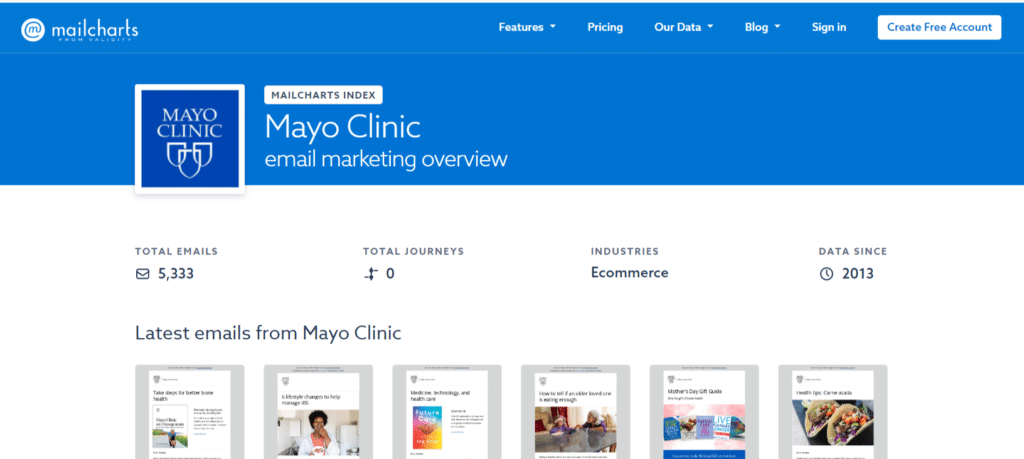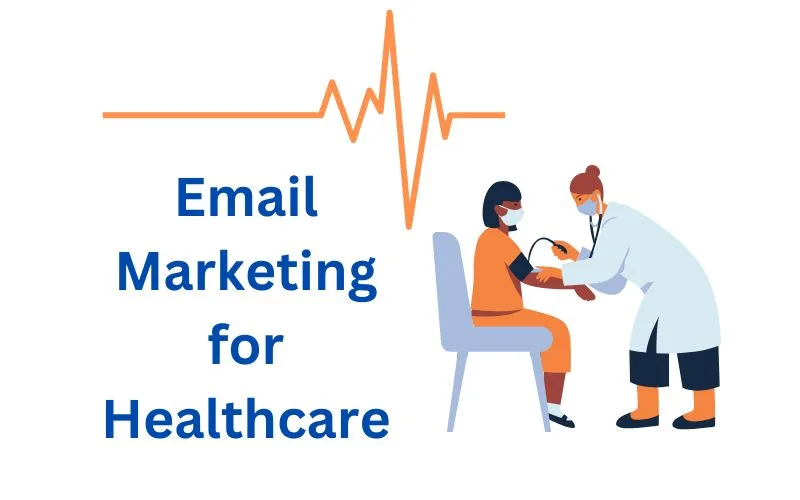Are you a healthcare provider looking for ways to increase the engagement of your patients? If that’s the case, email marketing might be a good option.
With the right techniques and strategies, email advertising can assist you in building strong relationships with your patients, improve patient satisfaction, and ultimately drive better health outcomes.
In this article, we’ll investigate email marketing for medical care, including its advantages, best practices, and tips for progress.
Table of Contents
Introduction: Why Email Marketing Matters for Healthcare Providers
In the present digital age, email remains one of the best ways of connecting with patients.
According to Hubspot, an email has an average open rate of 41.23% in the healthcare industry, making it a powerful tool for improving patient outcomes and engaging patients.
Healthcare providers can educate patients about their health conditions, send personalized emails to them, and provide valuable resources to help them stay healthy by using email marketing.
The Advantages of Email Marketing for Healthcare Providers
Email marketing offers various advantages for Health Care providers, including:
1. Improved Patient Engagement
Healthcare providers can communicate with patients directly through email marketing. By sending personalized messages and relevant content, providers can build strong relationships with patients, which can ultimately lead to improved patient engagement and satisfaction.
2. Increased Rates of Patient Retention
Healthcare providers can increase rates of patient retention by maintaining contact with patients via email. Providers can assist patients in remaining engaged with their health and loyal to their healthcare providers by sending regular updates and relevant content.
3. Cost-Effective Marketing
Email marketing is one of the most cost-effective ways to reach patients. Unlike traditional marketing methods, email marketing allows healthcare providers to reach a large number of patients at a relatively low cost.
4. Better outcomes for patients
Healthcare providers can assist patients in better understanding their health conditions and making informed decisions about their health by sending personalized emails and relevant content to patients. In the end, this may result in better health outcomes and increased patient satisfaction.
Best Practices for Healthcare Email Marketing
To Get the Most Out of Your Email Marketing, Follow These Best Practices. A few suggestions mentioned below that will help you-
1. Create a High-Quality Email List
Building a high-quality email list is the first step toward effective email marketing. Make sure that only patients who have agreed to receive your emails are included on your list. By providing a sign-up form on your website or in your office, you can accomplish this.
2. Segment Your Email List
To guarantee your emails are significant and personalized, it’s important to segment your email list. This means grouping patients according to their age, gender, or health conditions. You can send targeted messages to patients that are more likely to resonate.
3. Use engaging Subject Line
Because the subject line of your email is the first thing that patients will see when they open it, it is essential to make it compelling. Use a subject line that’s concise, attention-grabbing, and relevant to the content of your email.
4. Provide Valuable Content
It is essential to provide valuable content in order to maintain patients’ interest and engagement with your emails. This could include information about your practice, health advice, or educational resources. Make sure your content is relevant to your patient’s needs and interests.
5. Personalize Your emails
The key to effective email marketing is personalization. In the body of your email, use your patients’ names in the subject line, and tailor your emails to their specific requirements and interests.
6. Make your emails mobile-friendly
because a growing number of patients are accessing email on their mobile devices. Patients will be able to easily read and engage with your content on their smartphones or tablets if your emails are mobile-friendly.
7. Include a Clear Call-to-Action
In every Email You Send A clear call-to-action (CTA) should be included. Make sure your call to action (CTA) is straightforward and action-oriented, whether you want customers to make an appointment, download a resource, or follow you on social media.
Email Marketing for Healthcare Use Case
Mayo Clinic: Mayo Clinic is a non-profit medical organization that provides medical care and conducts research. Their email marketing campaign aims to provide helpful and informative content to their subscribers. They also use email marketing to reach and be in touch with patients.

Email Marketing for Healthcare: Frequently Asked Questions
The following are some frequently asked questions regarding email marketing by healthcare providers:
Is email marketing compliant with HIPAA?
Yes. If done correctly, Email marketing can comply with HIPAA. This means taking steps to ensure patient information is protected and secure, such as using encryption and secure email servers.
How frequently should I email patients?
Your practice and the needs of your patients will determine how frequently you send emails. However, it’s generally a good idea to send at least one email per month to stay top-of-mind with patients.
What kind of content should my emails contain?
Your patients should find the information in your emails useful and relevant. This could be in the form of personalized messages, health advice, practice updates, or educational resources. Ensure your content is customized to your patients’ necessities and interests.
How can I measure my email marketing campaigns’ success?
Metrics like open rates, click-through rates, and conversion rates can be used to evaluate the effectiveness of your email marketing campaigns. This will assist you in understanding the performance of your emails and identifying areas for improvement.
Can I utilize email marketing to acquire new patients?
Yes, email marketing can be an effective way to attract new patients. By offering incentives such as a free consultation or discount on services, you can encourage prospective patients to sign up for your email list and learn more about your practice.
How can I avoid having my emails appear in the spam folders of my patients?
It is essential to follow best practices, such as using a concise subject line, avoiding spam trigger words, and only sending emails to patients who have consented to receive them, in order to avoid appearing in the spam folders of your patients. Learn email deliverability best practices
Wrap Up
In conclusion, healthcare providers looking to increase patient engagement, retention, and outcomes may benefit greatly from using email marketing.
By following best practices and offering valuable content, you can build strong relationships with your patients and drive better health outcomes.
So why not give it a try? With a little time and effort, email marketing can help you take your practice to the next level.
You May Also Like
Learn email marketing step-by-step guide
Mistakes to avoid in email marketing
Email marketing tips & tricks
Email marketing faqs
8 Best free email marketing courses online
10 Best free email marketing tools
Disclaimer – This post is for knowledge purposes and does not guarantee anything. Do your own research before taking any action.
